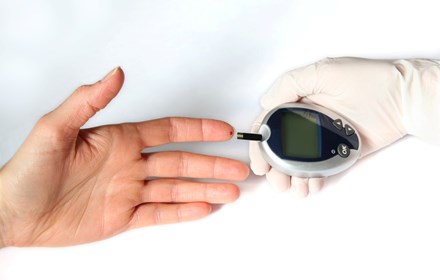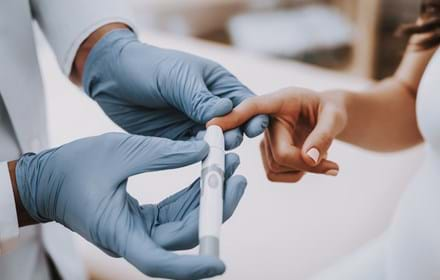
“Additive manufacturing” technology could improve blood sugar monitors for type 1
A team of researchers in the US have been using “additive technology” to combine a continuous glucose (sugar) monitoring device with an insulin pump catheter for people with type 1 diabetes.
It is hoped that the finished device would work better, cost less and be more comfortable for people with type 1 diabetes, and could greatly improve self-management of the condition.
The technology by engineers at Oregon State University, Portland, may be used in an “artificial pancreas” using a single point of bodily entry, or catheter, instead of existing systems that require at least two entry points.
New sensor: To create new types of sensors, gold films are patterned onto a surface using microcontract printing and etching.
One of the main advances in the creation of the device is the use of electrohydrodynamic jet, or “e-jet” printing. This process is similar to an inexpensive inkjet printer - but it creates much finer drop sizes and works with biological materials such as enzymes, instead of ink.
Greg Herman, Associate Professor of Chemical Engineering at Oregon State University, said: “This technology and other work that could evolve from it should improve a patient’s health, comfort and diabetes management.”
These systems provide constant monitoring of glucose levels and are matched with handy infusion pumps. They control delivery of the hormones insulin (and sometimes glucagon) produced in the pancreas, and maintain safe levels of glucose in the blood.
The findings were recently published in the ECS Journal of Solid State Science and Technology, in work supported by the National Institutes of Health.
Without carefully controlled blood sugar levels people with type 1 diabetes can risk developing serious health complications, including retinopathy, blindness, neuropathy, kidney and heart disease.
The team developing the device believe it may also be useful to people with type 2 diabetes as well, and it has the ability to make other biological measurements, beyond just sugar.
The use of plastic surfaces, which are the same thickness as cling film, in the development of the devices allows them to be wrapped around a catheter.
John Conley, Professor of Electrical Engineering at Oregon State University, said: “The challenges of making these sensors on such thin plastic films were difficult to overcome, but we found that additive manufacturing approaches simplified the process, and should lead to much lower costs.”
The research team have applied for patents on the technology with the aim of preparing the device available.
Nick Oliver, Honorary Clinical Senior Lecturer, Department of Medicine, Imperial College London, said: “This novel way to print biological materials around insulin pump catheters has real potential to make sensor-augmented pump therapy, and future artificial pancreas devices, more usable and less invasive for people with type 1 diabetes. Several approaches are being pursued to integrate continuous glucose monitors with insulin pump catheters and it will be exciting to see the clinical studies of the devices in the next few years.”
I would like to make a regular donation of
I would like to make a single donation of
There are lots of ways to raise money to support
people living with all forms of diabetes.
Bake, Swim, Cycle, Fly ... Do It For DRWF!
Fundraise with us
Recent News


